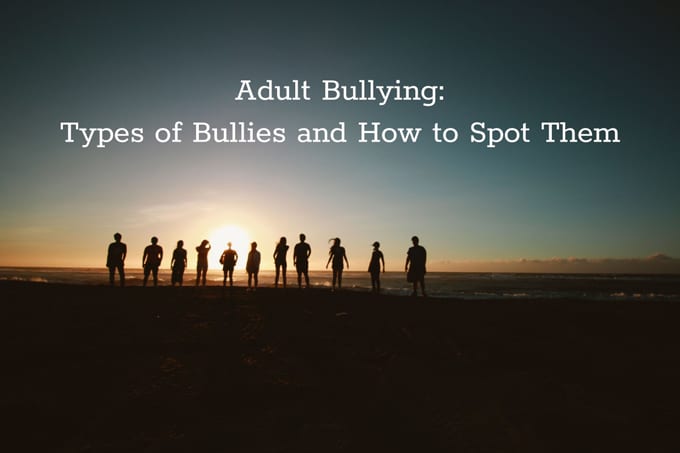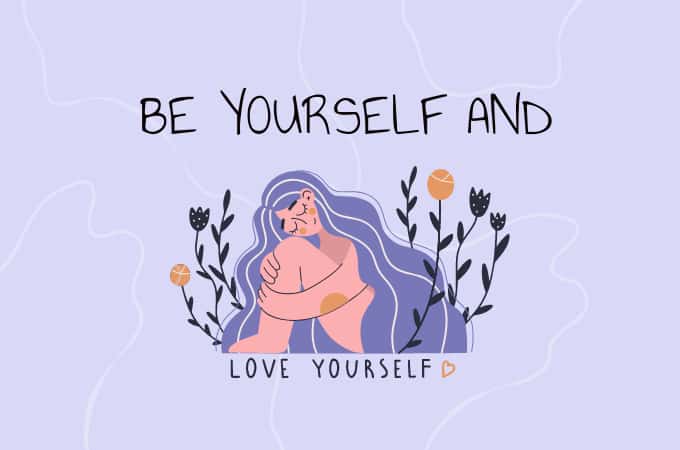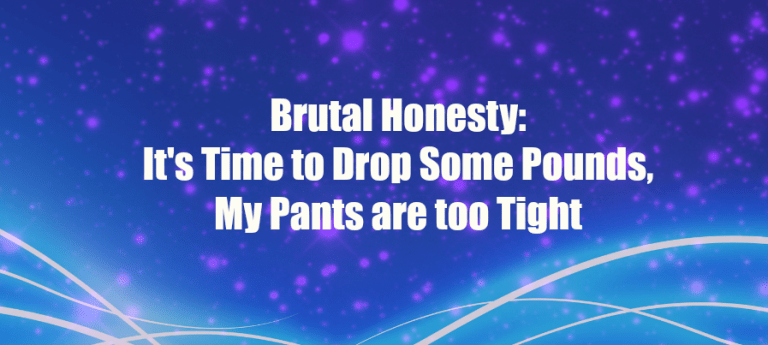Bullying: Types of Bullies and How to Spot Them
When my son was in middle school, he faced a really bad bullying situation. We had to jump into action so quickly, we didn’t have time to dissect it. The kid who stalked him, harassed him and physically threatened him was just a bully, a lonely kid. Since then though, we’ve learned there are many different types of bullies, so as part #2 in my adult bullying series, we’re going to discuss those types and how to spot them.
As I’m not a professional in this field, I’ve been doing a lot of research. I talked to others who had faced bullies throughout their adult life, and then researched some more. I had no idea how different true bullies are beyond the stereotypical viewpoint of a bully.

There are a number of different types of bullies, and there are also variants of bullying itself. While no bullying is fun, some situations are easier to handle if you’re aware of more of the reason behind it, so knowing what type of bully you may be facing can help. Bullying has been going on forever, and with the increase in social media, statistics have proven that bullying has also increased. Basically, this means there’s no real way to avoid a bully at some point in your life, because you can go home to your safe place, but if you’re on social media, you could face challenges there, too. If you understand the science behind bullying, you may find some peace and resolution.
There are a number of types of bullies described out there on the internet, some defined by their personalities, others defined by how they bully someone. Please remember though, bullying isn’t just one event. It’s not someone just calling you a name or disagreeing with you, it’s not someone not giving you a job or someone not being your friend. It’s not having different political beliefs. Bullying is a habitual problem and is entirely separate from any of the above problems that everyone faces. It’s its own entity and must be treated as such. And as the victim, it’s not your fault, because bullies all have other options. You do not deserve to be bullied.
Verbal: Bullying in a verbal form is probably the easiest kind to do, because it can be done virtually anywhere. It’s done loudly, so others hear you be demeaned and embarrassed, or quietly, where no one else hears, eroding your comfort without anyone understanding why. It’s very common in school-age kids because kids think it’s clever to tease others while others laugh and as kids grow up into adults, they learn how to do it in other ways. Common verbal adult bullying tactics include snide comments, truth disguised as sarcasm and pointed questions. They aim to tease and taunt and provoke a reaction and/or upset them. It’s common in the workplace and family gatherings. Name calling, making fun of someone’s physical attributes or intelligence or choices are common actions from a verbal bully and they want to hurt someone’s self-esteem.
Physical: Bullies often start as verbal bullies and when that doesn’t get the attention they want, they advance into physical altercations. It’s sometimes seen as a desperate plea for attention but also is a ploy to show control over their victim. Physical bullying can be the obvious things, such as tripping someone, hitting them, slapping, punching or kicking. Sometimes they’ll throw things at the victim, do damage to their property, attempt unwanted physical touch and invade personal space. It’s more dangerous than verbal bullying, but also the easiest to see and prove. Stereotypically, physical bullies are bigger than the victim, but that’s not always the case in actuality.
Cyberbully: This is the newest type of bullying, and is sometimes seen as a subset of another type of bullying. Cyberbullying takes place online, on social media and is sometimes anonymous while other times takes place in the wide open. It’s similar to verbal bullying, but often is committed by strangers. Anyone that’s been on Facebook or Twitter has seen it. Sub-tweets, veiled stories, anonymous comments or communications, memes, photos, outright attacks, stalking people online, repetitive arguing, it is insidious but again, not as obvious unless you work the pattern and look for it. If you’ve ever shared your opinion on a random Facebook page and immediately were jumped on, you’ve probably experienced gang cyberbullying, which is less habitual and more mob mentality.
Social: Social bullying is a newer term and can include both verbal and physical aspects, but it’s on a new level and typically has an agenda. It’s perpetrated by one person or a group of people against one or more people, designed to affects someone’s life on a bigger scale. Social bullying aims to harm someone’s reputation, business or friendships and can be the hardest for others to see for what it is. It can also include rumors, head games and calculating behavior as well.
There is also sexual bullying or prejudicial bullying, where people are bullied for their sex or their race, disability, lifestyle, and can include body shaming. Disabled kids are frequently targets, whether they are physically disabled or they have a developmental disability. Bullies are seeking to gain stature, narcissistic, physically domineering, have anger issues, are unhappy, new in town, or more. The spectrum is large and can interconnect.
Here are some websites to check out for more specifics:
Just like there are many types of bullies, there are a lot of types of victims. Some are already suffering low self-esteem, others are trying to find their place in a field, a workplace, a new family, a new neighborhood. Victims may be someone who appears vulnerable or weak or even someone who is successful.
A recent study stated that over 20% of kids were bullied in school and that 70% of students have witnessed it, yet only 20-30% of kids tell their parents. Another pretty compelling stat is that 57% of bullying stopped within 10 seconds when someone else intervened. We need to do so much better, because some bullied kids turn out to be bullies. In a society with shootings and violence on a regular basis, we owe it to ourselves to do everything we can to stop it. (Statistics source: StopBullying.gov.)
Bullying is hidden or obvious, can cause physical and mental damage, takes place in person, behind another’s back or online, is sometimes indirect and can happen in all settings. It’s not just what you see in movies or hear celebrities talk about online. It’s habitual yet spontaneous. It’s all so different, yet it’s something that can’t be ignored. Victim or bystander or bully, it’s time to think about what your role is and why.
In upcoming posts, we’ll talk about how we can all move on and resolve bullying, even knowing that bullying doesn’t really have a resolution in general. One huge thing I confirmed in my research is that there is not one size fits all approach. A lot of the things that we’ve been telling our kids for years are ineffective. Even the use of the ‘victim’ or ‘bully’ label can be detrimental. A lot of sites don’t have actual answers on how to stop bullying but instead, they focus on how to help the victim. Avoid the bully. Speak up. Tell someone, and so forth. Personally, I’m not sure that this is enough, because putting the onus on the victim to handle their situation isn’t actually stopping the bully; it’s just stopping the bully from harming them, leaving them able to move on to bully someone else. Is that really what we want in this world?
In the end, we can’t control others’ actions but a kinder world is possible. We can help each other feel safe in their workplaces, their neighborhoods and in their social environments. We can remind people that they can agree to disagree without bullying; there is never any excuse to bully, no matter what the relationship is or was, where they see each other or if it’s ‘just happening online.’ (Have we not learned anything from our bullying politicians in office?)
Stay tuned for upcoming posts about adult bullying, including one focused specifically on young adults attending college. It’s a whole new world for our growing children, yet due to stress and other life issues, bullying continues into college for some. I’ve lined up a professional in the field who has provided me with some excellent advice to share. (I’m also reading her book and will share more of that with you, too.)
If you missed my first post, you can find it here. Keep your stories and thoughts coming! While I am so sorry and often aghast at what you’re sharing, I feel like so many of us can relate and empathize. I hope we can learn from each other while growing our own personal toolkit of information and resources. Thank you all for your input!






